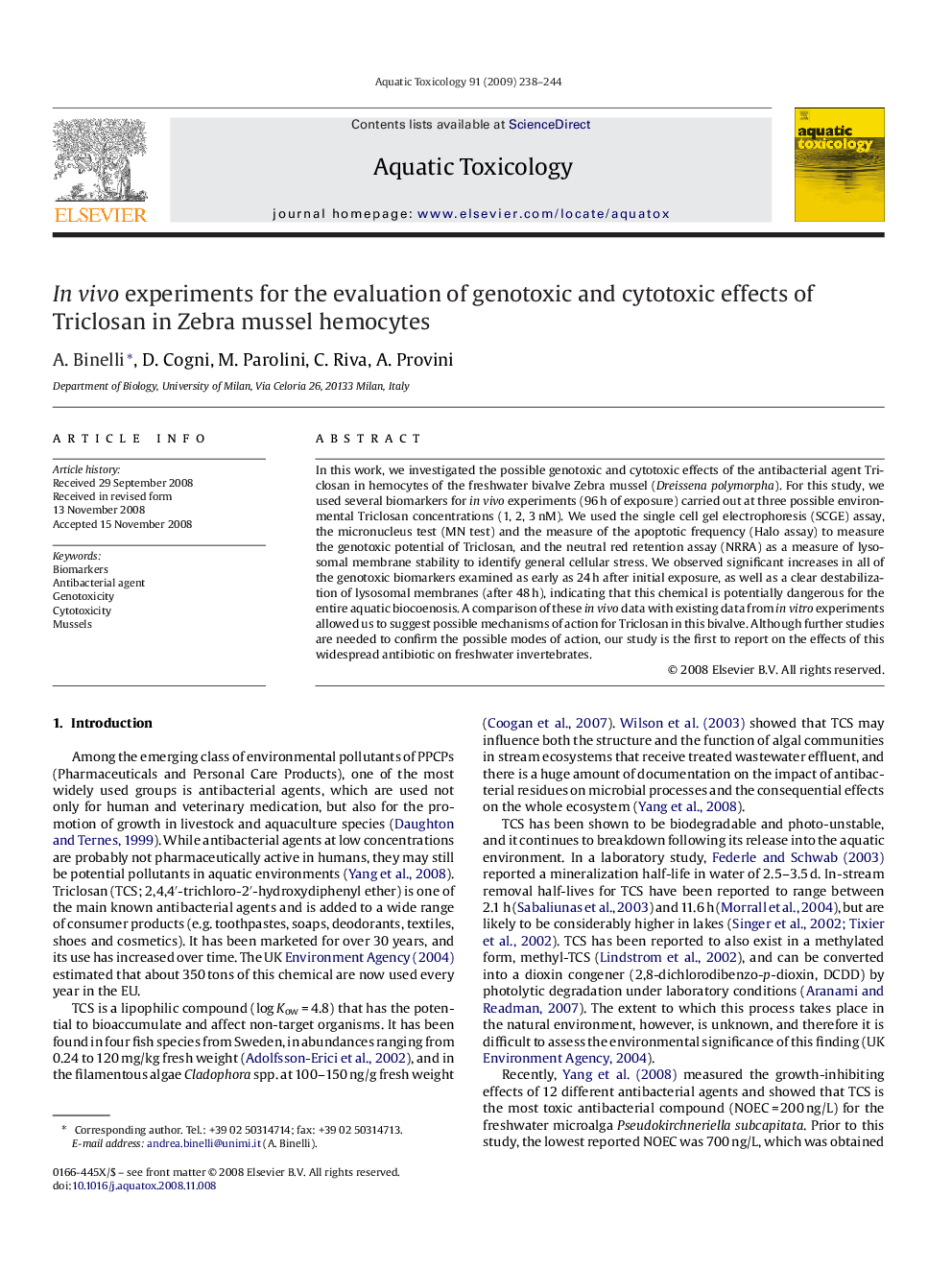| Article ID | Journal | Published Year | Pages | File Type |
|---|---|---|---|---|
| 4530704 | Aquatic Toxicology | 2009 | 7 Pages |
In this work, we investigated the possible genotoxic and cytotoxic effects of the antibacterial agent Triclosan in hemocytes of the freshwater bivalve Zebra mussel (Dreissena polymorpha). For this study, we used several biomarkers for in vivo experiments (96 h of exposure) carried out at three possible environmental Triclosan concentrations (1, 2, 3 nM). We used the single cell gel electrophoresis (SCGE) assay, the micronucleus test (MN test) and the measure of the apoptotic frequency (Halo assay) to measure the genotoxic potential of Triclosan, and the neutral red retention assay (NRRA) as a measure of lysosomal membrane stability to identify general cellular stress. We observed significant increases in all of the genotoxic biomarkers examined as early as 24 h after initial exposure, as well as a clear destabilization of lysosomal membranes (after 48 h), indicating that this chemical is potentially dangerous for the entire aquatic biocoenosis. A comparison of these in vivo data with existing data from in vitro experiments allowed us to suggest possible mechanisms of action for Triclosan in this bivalve. Although further studies are needed to confirm the possible modes of action, our study is the first to report on the effects of this widespread antibiotic on freshwater invertebrates.
